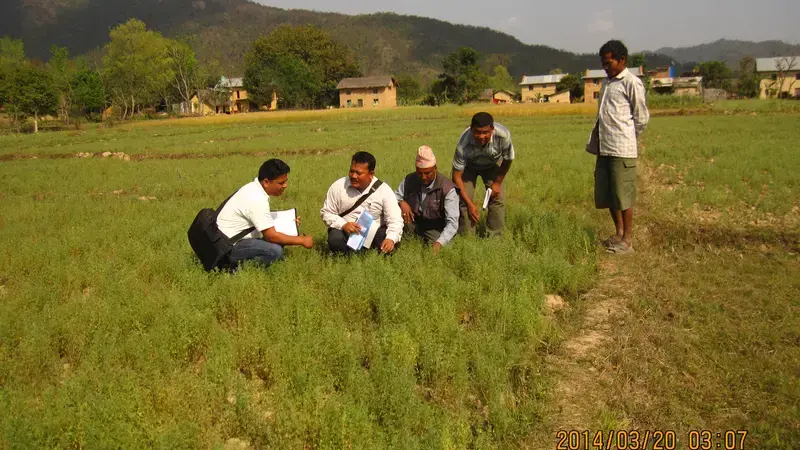New micronutrient rich lentil varieties released in Nepal and India

Nepal recently released ‘Khajura Masuro-3’ (RL-4), a new iron (Fe) and zinc (Zn) rich variety, to the farmers in Terai region. The variety was developed by conventional breeding method, crossed with germplasm originating from Syria and provided by ICARDA.
The new variety, undergoing advance trials since 2006, demonstrates high yield performance and less disease and pest infestation. With many desirable traits such as fast cooking and a palatable taste, it fast became the preferred variety with farmers and is scaling up in eastern Terai to mid and far western Terai regions of Nepal.
The RL-4 variety was developed by scientists at Nepal Agricultural Research Council’s Grain Legumes Research Program in collaboration with ICARDA. The variety gives an average yield of 1.8 t/ha and shows resistance to fusarium wilt, rust and Stemphylium blight diseases common in the hills of Terai.
Most importantly, RL4 is rich in Fe (average 81.5 mg/kg) and Zn (average 65.2 mg/kg) – micronutrients particularly essential for the health of women and the development of growing children.
In another progress, India recently released ‘Pusa Ageti Masoor’ (L4717), an extra early maturing variety, also with high iron and zinc. The variety, using ICARDA germplasm, shows yield superiority of 13.7 percent over the best performing variety in Central Zone and matures on average in only 100 days.
The extra early maturing trait of L4717 helps the lentil crop escape terminal moisture and heat stress in the central parts of India (Madhya Pradesh, Uttar Pradesh, Rajasthan and Chhattisgarh states). The variety was developed by scientists at the Indian Council of Agricultural Research’s Indian Agricultural Research Institute in collaboration with ICARDA’s lentil breeders.
The outcomes are part of ICARDA’s ongoing research partnerships with the NARS of India, Nepal and Bangladesh, aiming to promote production of lentil by utilizing the large areas of rice paddies in these countries during fallow season to grow lentil. Along with better performance, these lentil varieties are also bred for higher content of Fe and Zn to address the widespread malnutrition in the region.(Read more).
